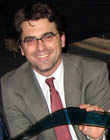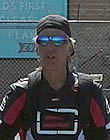|
|
This topic comprises 2 pages: 1 2
|
|
Author
|
Topic: Which Motor Relay to use?
|
|
|
|
|
|
|
|
|
Andres Briano
Expert Film Handler

Posts: 162
From: Buenos Aires, Argentina
Registered: Jan 2008
|
 posted 05-24-2011 10:07 AM
posted 05-24-2011 10:07 AM





quote: Tony Bandiera Jr.
Finally, in a single-projector application, the motor start relay is really not 100% necessary, you can leave the Dolby-supplied jumper in and the Digital will work fine. (If you have no jumper or relay what will happen is if the DD drops out the sound will mute as it will assume there is no film running and thus no SR backup playing.)
Hey Tony,
Excuse my ignorance, but what is that relay for? I´ve always dealt with single projector systems and, as you´ve mentioned, they come with a factory jumper to the 9 pin connector labeled Motor Start. I have wondered about that before, but never asked anyone.
Thanks,
Andrés
| IP: Logged
|
|
|
|
|
|
|
|
|
|
Bernie Anderson Jr
Master Film Handler
Posts: 435
From: Woodbridge, New Jersey
Registered: Apr 2000
|
 posted 02-13-2012 11:03 PM
posted 02-13-2012 11:03 PM





Hey Louis,
Which model Omron relay do you use?
Also , for clarity, so I totally understand the operation of the relays, you need two relays, one at each projector motor. When the motor turns on, it closes contacts in the relay telling DD that an incoming reel is about to go on screen. So for those 8 secs that both machines are running right before the changeover, both relays are energized, then when the outgoing machine shuts down, the only relay holding a closure is the incoming machine only. Right?
Thanks
| IP: Logged
|
|
|
|
|
|
|
|
|
|
|
|
|
|
All times are Central (GMT -6:00)
|
This topic comprises 2 pages: 1 2
|
Powered by Infopop Corporation
UBB.classicTM
6.3.1.2
The Film-Tech Forums are designed for various members related to the cinema industry to express their opinions, viewpoints and testimonials on various products, services and events based upon speculation, personal knowledge and factual information through use, therefore all views represented here allow no liability upon the publishers of this web site and the owners of said views assume no liability for any ill will resulting from these postings. The posts made here are for educational as well as entertainment purposes and as such anyone viewing this portion of the website must accept these views as statements of the author of that opinion
and agrees to release the authors from any and all liability.
|

 Home
Home
 Products
Products
 Store
Store
 Forum
Forum
 Warehouse
Warehouse
 Contact Us
Contact Us




 Printer-friendly view of this topic
Printer-friendly view of this topic








![[Big Grin]](biggrin.gif) DPST switches can and will suffer from contact failures and flashovers (remember you're switching a highly inductive load [motor] which makes for a lot of arcing in the switch) which will fry your very expensive sound processor. So would you rather save your processor or try to save the $10 for a set of relays?
DPST switches can and will suffer from contact failures and flashovers (remember you're switching a highly inductive load [motor] which makes for a lot of arcing in the switch) which will fry your very expensive sound processor. So would you rather save your processor or try to save the $10 for a set of relays? 

![[Smile]](smile.gif)
![[thumbsup]](graemlins/thumbsup.gif)





